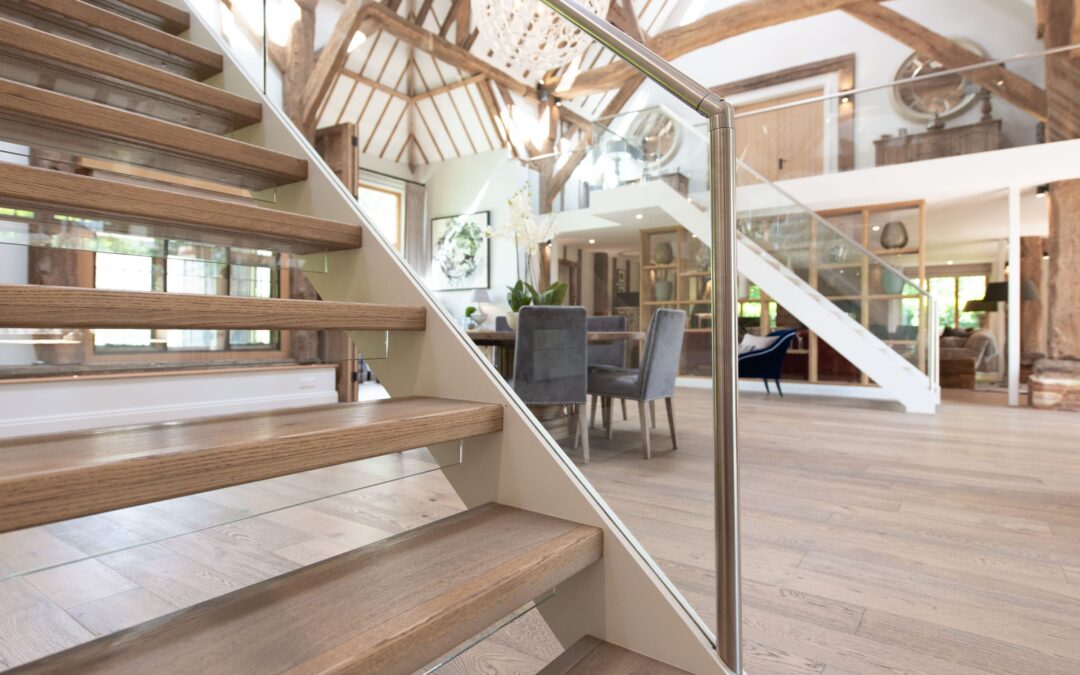The choice of flooring material for stairs is a significant decision in home design, and engineered wood has emerged as a popular and practical option. Engineered wood floor stairs offer a balance of elegance, durability, and versatility, making them a compelling choice for homeowners. In this article, we’ll explore the benefits of using engineered wood for stairs, key considerations in their installation, and the overall impact they can have on the aesthetic of a home.
Durability and Stability:
Engineered wood is known for its durability and stability, making it an excellent choice for high-traffic areas like stairs. The construction of engineered wood involves layers of real wood pressed together with a top veneer, creating a sturdy and resilient material. This ensures that engineered wood stairs can withstand the wear and tear associated with daily use.
Resistance to Warping and Cupping:
Unlike solid wood, which can be prone to warping and cupping due to changes in humidity and temperature, engineered wood is engineered to resist these issues. The layers of wood are cross-hatched, providing stability that minimizes the risk of warping. This makes engineered wood floor stairs a reliable choice, particularly in areas with varying environmental conditions.
Versatility in Design:
Engineered wood floor stairs offer a wide range of design possibilities. They are available in various wood species, finishes, and colors, allowing homeowners to achieve a customized look that complements their overall design aesthetic. Whether aiming for a classic, rustic, or modern appearance, engineered wood stairs can be tailored to match the desired style.
Cost-Effectiveness:
Engineered wood often presents a more cost-effective option than solid hardwood, making it an attractive choice for budget-conscious homeowners. While maintaining the aesthetic appeal of hardwood, engineered wood floor stairs provide a durable and elegant solution at a more accessible price point.
Ease of Installation:
Engineered wood stairs are designed for easy installation, often utilizing a tongue-and-groove system that facilitates a secure and efficient fit. This can result in a quicker installation process compared to some other flooring materials, reducing both labor costs and the inconvenience associated with home renovations.
Compatibility with Underfloor Heating:
Many homeowners opt for underfloor heating systems to enhance comfort in their homes. Engineered wood is well-suited for such systems, as its layered construction provides stability and minimizes the risk of temperature-related issues. This makes engineered wood floor stairs a compatible and comfortable option in homes with underfloor heating.
Consistent Appearance:
Engineered wood stairs offer a consistent appearance due to the manufacturing process that ensures uniformity in color and grain patterns. This consistency is particularly advantageous in achieving a cohesive look throughout the home, ensuring that the stairs seamlessly integrate with the surrounding flooring.
Environmentally Friendly:
Engineered wood is often considered an environmentally friendly option. The use of a veneer layer on top of composite materials allows for the efficient utilization of wood resources. Additionally, some engineered wood products are made from sustainable or recycled materials, making them a more eco-conscious choice compared to traditional solid wood options.
Easy Maintenance:
Engineered wood floor stairs are relatively easy to maintain. Regular sweeping and occasional damp mopping are usually sufficient to keep them clean. The protective top layer provides resistance to stains and wear, contributing to the longevity and aesthetic appeal of the stairs with minimal maintenance effort.
Increased Resale Value:
The installation of engineered wood floor stairs can enhance the overall resale value of a home. Potential buyers often appreciate the combination of durability, style, and cost-effectiveness that engineered wood offers. The investment in these stairs can contribute to the market appeal of the property.
Considerations for Installation:
While engineered wood floor stairs offer numerous advantages, there are essential considerations to keep in mind during the installation process:
- Subfloor Condition: Ensure that the subfloor is in good condition and level before installing engineered wood stairs. Any irregularities in the subfloor can affect the stability and appearance of the stairs.
- Professional Installation: Engage the services of experienced professionals for the installation of engineered wood stairs. Proper installation is crucial to achieving a secure fit, minimizing the risk of issues such as creaking or shifting over time.
- Choice of Veneer: Pay attention to the thickness of the top veneer layer. A thicker veneer allows for future refinishing, extending the lifespan of the stairs. Consider the expected level of foot traffic and choose a veneer thickness that aligns with durability requirements.
- Underlayment Consideration: Evaluate the need for underlayment based on the specific conditions of the installation site. Underlayment can provide additional support, insulation, and sound absorption, enhancing the overall performance of the engineered wood stairs.
- Adhering to Manufacturer Guidelines: Follow the manufacturer’s guidelines and recommendations for installation, including acclimatizing the engineered wood to the environment before installation. Adhering to these guidelines ensures optimal performance and longevity of the stairs.
Conclusion:
Engineered wood floor stairs offer a winning combination of durability, versatility, and aesthetic appeal. With their resistance to warping, ease of installation, and compatibility with various design styles, these stairs have become a popular choice among homeowners. Whether aiming for a classic, contemporary, or eclectic look, engineered wood stairs provide a reliable and cost-effective solution that elevates the overall ambiance of a home.

